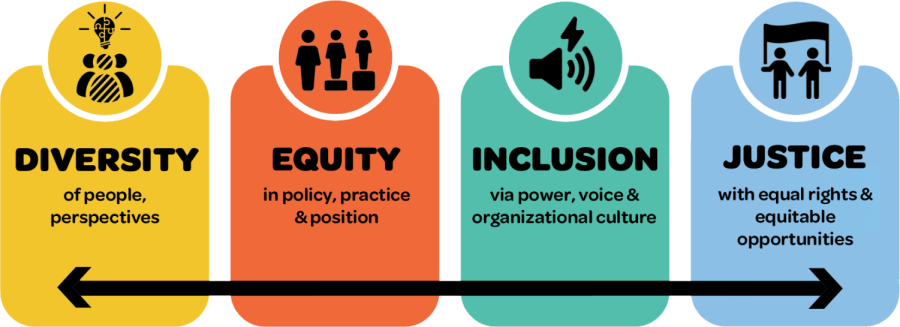Elementary and Early Years Students Learn Diversity
Diversity, Equality, Inclusion and Justice Committee (DEIJ) students in early years and elementary school are receiving monthly classes from high school students to learn to create a safer and just environment at school.
DEIJ is a school-wide program with a goal of promoting fairness and community among all Columbus School students, staff, and parents. This semester, high school students are visiting elementary and middle school classes giving presentations focusing on diversity.
“DEIJ is divided into sub-committees which are from K4 to Middle School, the workshops are led every month, and all workshops have to be connected,” Rosario Navarro, Grade 12, said.
DEIJ focuses on students from Early Years, Elementary School and Middle School because most of a child’s personality starts showing from 0-5 years. The committee is interested in students learning these values so they grow their personality with values.
“We think that in order for students to grow with the values of DEIJ that are diversity, equality, inclusion and justice, we have to focus in early years because then they will develop their personality with these values,” Navarro said.
9th-12th students partnered up to visit Elementary and Early Years classrooms from 7:30 am to 8:25 am. During this time they do an interactive activity that helps transfer the message to the students that not everyone likes the same things and that in the end every person is diverse in their own way.
“We usually do activities that help kids/students understand that not everyone has to be the same, so for example the way they dress or even the way they express themselves,” Amalia Gomez, Grade 11, said.
DEIJ has been on the go for various years but for this semester the committees are trying to focus more on the “D”, diversity without ignoring EIJ, equality, inclusion and justice. The school is very conscious about how to approach students with DEIJ because the committees understand that for some of the students it is not easy to talk about these topics.
“To be honest with you right now we are in a process where we have to be very conscious about how we are managing the topics of DEIJ because we understand not everyone is easy to talk about DEIJ.” Juliana Sarmiento, DEIJ Student Committee Leader, said.
The student committee is led by Juliana Sarmiento, and DEIJ in general is led by Trisha and Ruth Allen, this year The Community Committee was created which involves parents and staff because the school believes with any strategic objective there has to be parents.
“The community committee is something new this year that is staff and parents because we do believe that with any strategic objective, we need to have the parents involved here,” Sarmiento said.
This year’s strategy is not only used in DEIJ committees but it has also been used in several TCS programs like: GIN and Buddies. The strategy is called Peer to Peer. Studies and articles reveal that when an adult stands in front of a class to teach or transmit something it’s not the same thing as when a student does it now that they feel understood.
“This strategy is called Peer to Peer ‘par a par’… because for the kids, for the younger kids, they remember it even better. They feel like you know them, they feel like you understand what they are going through,” Sarmiento said.




